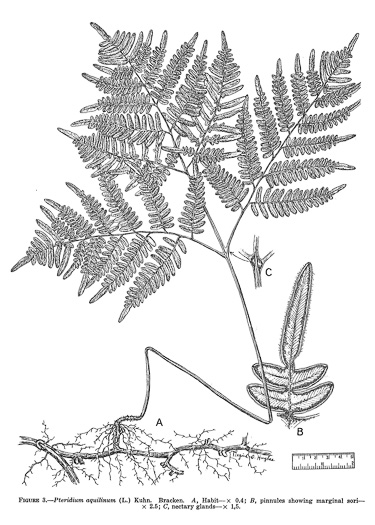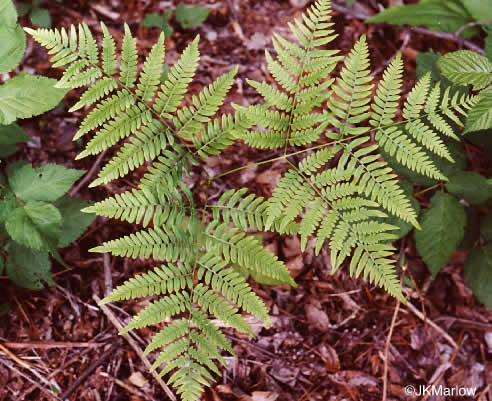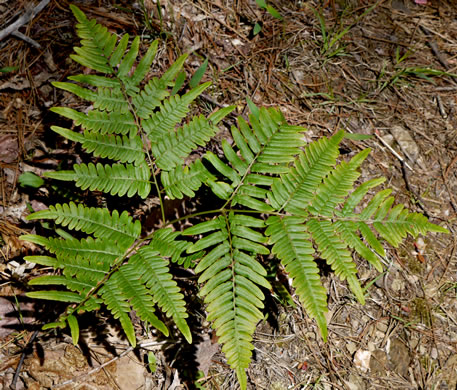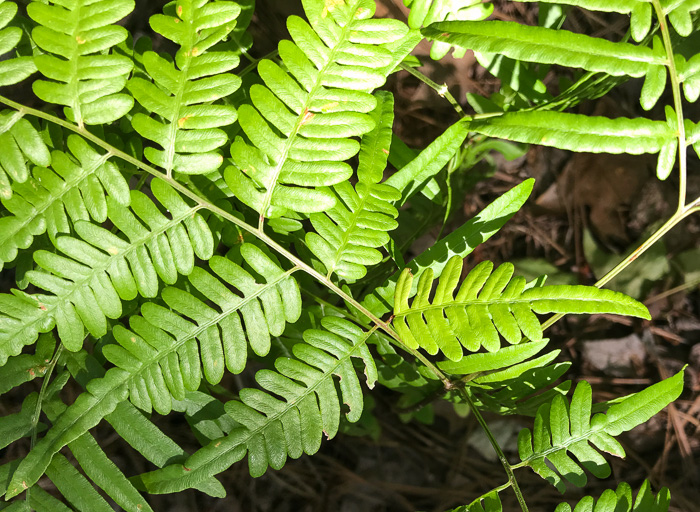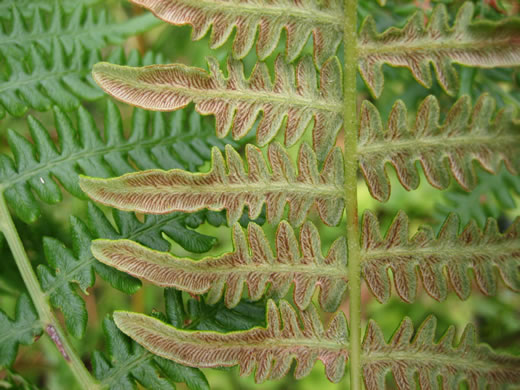Hovering over an image will enlarge it and point out features (works better on desktop than on mobile).
![]() A camera indicates there are pictures.
A camera indicates there are pictures.
![]() A speaker indicates that a botanical name is pronounced.
A speaker indicates that a botanical name is pronounced.
![]() A plus sign after a Latin name indicates that the species is further divided into varieties or subspecies.
A plus sign after a Latin name indicates that the species is further divided into varieties or subspecies.
Most habitat and range descriptions were obtained from Weakley's Flora.
Your search found 2 taxa.
Clicking ![]() one takes you to more information and/or pictures.
one takes you to more information and/or pictures.

![]() Common Name:
Eastern Bracken, Brake
Common Name:
Eastern Bracken, Brake
Weakley's Flora: (4/24/22) Pteridium latiusculum FAMILY: Dennstaedtiaceae
INCLUDED WITHIN PLANTS National Database: Pteridium aquilinum var. latiusculum FAMILY: Dennstaedtiaceae
INCLUDED WITHIN Vascular Flora of the Carolinas (Radford, Ahles, & Bell, 1968): Pteridium aquilinum var. latiusculum 010-05-001 FAMILY: Pteridaceae
Habitat: Mainly in dry woodlands, forests, and heath balds, up to 1600 m in elevation
Common (rare in Coastal Plain)
Native to the Carolinas & Georgia

![]() Common Name:
Southern Bracken
Common Name:
Southern Bracken
Weakley's Flora: (4/24/22) Pteridium pseudocaudatum FAMILY: Dennstaedtiaceae
SYNONYMOUS WITH PLANTS National Database: Pteridium aquilinum var. pseudocaudatum FAMILY: Dennstaedtiaceae
SYNONYMOUS WITH Vascular Flora of the Carolinas (Radford, Ahles, & Bell, 1968): Pteridium aquilinum var. pseudocaudatum 010-05-001 FAMILY: Pteridaceae
Habitat: Mainly in dry sandy or rocky woodlands, often locally abundant in longleaf pine sandhills and pine flatwoods
Common in Coastal Plain (uncommon elsewhere in GA-NC-SC)
Native to the Carolinas & Georgia
Your search found 2 taxa. You are on page PAGE 1 out of 1 pages.

